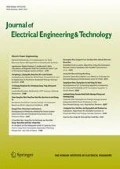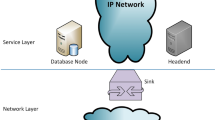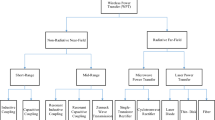Abstract
There is a huge difference between electricity production and its demand. In order to meet the requirements, a selective power cut is carried out which is currently based on area and time. Although this is a simplistic solution, it has many drawbacks such as the area gets completely deprived of even the very basic appliances such as lights and fans, which do not contribute significantly to the power consumption. This creates a need to come up with a solution so that no one gets deprived of using basic appliances at any time and still be able to reduce power consumption to fulfill the ever-growing demand. This work has dealt with the same by implementing a device selective protocol which can selectively cut power of particular devices depending on their energy rating, power rating, manufacturer etc. by the use of power line carrier communication. Hence, revolutionizing the whole concept of area selective power cut to device selective power cut. Since, IoT refers to a network of devices or “Things”, this work incorporates the basic principles of IoT by essentially creating a network of devices which can communicate with each other, over low bandwidth.








Similar content being viewed by others
References
Chakravorty U, Pelli M, Marchand BU (2014) Does the quality of electricity matter? Evidence from rural India. J Econ Behav Organiz 107:228–247
Aklin M, Cheng C-y, Urpelainen J, Ganesan K, Jain A (2016) Factors affecting household satisfaction with electricity supply in rural India. Nat Energy 1(11):1–6
Prasad G, Lampe L, Shekhar S (2016) In-band full duplex broadband power line communications. IEEE Trans Commun 64(9):3915–3931
Qian Y, Shi L, Li J, Zhou X, Shu F, Wang J (2020) An edge-computing paradigm for internet of things over power line communication networks. IEEE Netw 1–8:2020
Zhilenkov AA, Gilyazov DD, Matveev II, Krishtal YV (2017) Power line communication in IoT-systems. In: 2017 IEEE Conference of Russian Young Researchers in Electrical and Electronic Engineering (EIConRus)
Zhang Y-H, Lin S-X, Chen L-B, Chang W-J, Hu W-W, Tang J-J, Yu C-T (2017) An implementation of an in-vehicle power line communication system. In: 2017 IEEE 6th GCCE
FE Bureau (2019) Powered up: average electricity cut duration falls in may. The Financial Express. June 15, 2019. https://www.financialexpress.com/economy/power-up-all-india-average-electricity-cut-duration-falls-in-may/1608184/
Bhattacharya P, Kundu T (2018) One in three Indians own a refrigerator, a fifth own an AC or Cooler: NFHS data. Livemint. August 09, 2018. https://www.livemint.com/Industry/V7wX0BAvKiko83S4atfV0I/ConsumerdurablesmarketgrowingrapidlyData.html
Dani V, Jalihal D, Sampoornam S (2016) Power line carrier communication based low cost power monitoring and management system. In: IEEE First International Conference on Sustainable Green Buildings and Communities (SGBC), 2016
Nazmudeen MSH, Wan AT, Buhari SM (2016) Improved throughput for power line communication (plc) for smart meters using fog computing based data aggregation approach. In: 2016 IEEE international smart cities conference (ISC2), pp 1–4. IEEE, 2016
Van de Kaa G, Fens T, Rezaei J, Kaynak D, Hatun Z, Tsilimeni-Archangelidi A (2019) Realizing smart meter connectivity: analyzing the competing technologies power line communication, mobile telephony, and radio frequency using the best worst method. Renew Sustain Energy Rev 103:320–327
Xu X, Zhan Ao, Li X (2019) Design and implementation of street light control system based on power line carrier communication. Procedia Comput Sci 155:734–739
Du Toit P, Kruger C, Hancke GP, Ramotsoela TD (2017) Smart street lights using power line communication. In: 2017 IEEE AFRICON
Mlynek P, Misurec J, Kolka Z, Slacik J, Fujdiak R (2015) Narrowband power line communication for smart metering and street lighting control. IFAC-Papers OnLine 48(4):215–219
Sathishbaboo M, Chandru R (2017) Microcontroller based consumer end energy consumption control from substation using PLCC. In: IEEE Third International Conference on Science Technology Engineering and Management, 2017
Fujdiak R et al (2018) Investigation of power line communication and Wi-Fi co-existence in smart home. In: 10th International Congress on Ultra-Modern Telecommunications and Control Systems and Workshops (ICUMT), Russia, 2018
Barker S, Irwin D, Shenoy P (2017) Pervasive energy monitoring and control through low-bandwidth power line communication. IEEE Internet Things J 4(5):1349–1359
Lampe L, Tonello AM, Swart TG (2016) Power line communications: principles, standards and applications from multimedia to smart grid. Wiley, Hoboken
Akarte V, Punse N, Dhanorkar A (2014) Power line communication systems. Int J Innov Res Electr Electron Instrum Control Eng 2(1):709–713
Cortés JA, Sanz A, Estopiñán P, García JI (2015) Analysis of narrowband power line communication channels for advanced metering infrastructure. Springer Publication, Berlin
Shlezinger N, Dabora R (2015) On the capacity of narrowband PLC channels. IEEE Trans Commun 63(4):1191–1201
Author information
Authors and Affiliations
Corresponding author
Additional information
Publisher's Note
Springer Nature remains neutral with regard to jurisdictional claims in published maps and institutional affiliations.
Rights and permissions
About this article
Cite this article
Kumar, K., Saraswat, S., Jindal, S.K. et al. Experimental Validation of an IoT Based Device Selective Power Cut mechanism Using Power Line Carrier Communication for Smart Management of Electricity. J. Electr. Eng. Technol. 16, 67–77 (2021). https://doi.org/10.1007/s42835-020-00568-6
Received:
Revised:
Accepted:
Published:
Issue Date:
DOI: https://doi.org/10.1007/s42835-020-00568-6




